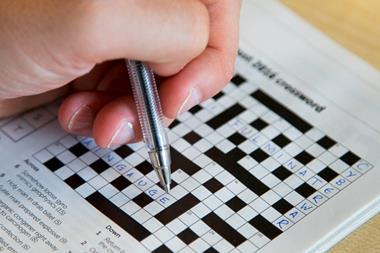Metal-ligand bonding
Metal-ligand bonding
R Janes and E Moore
Cambridge: RSC 2004 | Pp vi + 104 | ?24.95 | ISBN 0854049797
Reviewed by Mike Watkinson
There are so many books that already provide theoretical accounts of the bonding in transition-metal complexes, that I have to admit to being a little sceptical that Metal-ligand bonding would deliver anything terribly new even before I had opened it. The fact that it did was pleasing, but I fear that it is not quite what the book’s authors had in mind. They state in their preface that they wish to present an accessible (concise? small?), non- mathematical, yet detailed account of this area. This is a lot to ask of a book only 104 pages long (including many necessary diagrams). The book follows a fairly standard order for this material, taking the reader firstly though crystal-field theory then on to a brief introduction to magnetism before embarking on a molecular-orbital description of bonding in transition-metal chemistry. An overview of the principles behind molecular symmetry is given on the way. Some of the sections certainly meet the authors’ aims and do provide clear, concise explanations of theory behind experimental observations. Unfortunately, however, because the authors strive to include so much information, both at a basic as well as a more advanced level, some sections of the text will not only confuse but, I fear, also mislead students. This is because the length of the book simply does not provide the authors with enough scope to include the whole (or at least enough) of the story. The brief introduction of molecular symmetry in chapter 10 doesn’t work and is arguably unnecessary. This is a notoriously difficult topic for undergraduates to cope with and, although symmetry terminology is used throughout the book, I don’t see that a reader with no prior knowledge of the topic will suddenly be empowered to appreciate its use. I found the repeated use of partial molecular orbital diagrams unhelpful and at times confusing. The absence of any recommended reading is also a curious omission given the nature of the book. On the positive side I liked the layout of the text and the regular self-test questions, the answers to which are provided both in the text and also in a separate answers chapter.
The learning outcomes are also clearly flagged in a section at the end of the text. Revision questions are also provided, again with answers, to allow the reader to test their knowledge as a whole. To my mind it is here that the book has most of its appeal; perhaps more to the lecturer rather than the student. The questions are thoughtful and often approach theory from a different viewpoint than other textbooks.
I will certainly be dipping into the text for future inspiration when setting coursework and examinations, however at ?24.95, and given my other criticisms, I believe there are already several better books for undergraduates on the market, both in terms of value and in content.












No comments yet